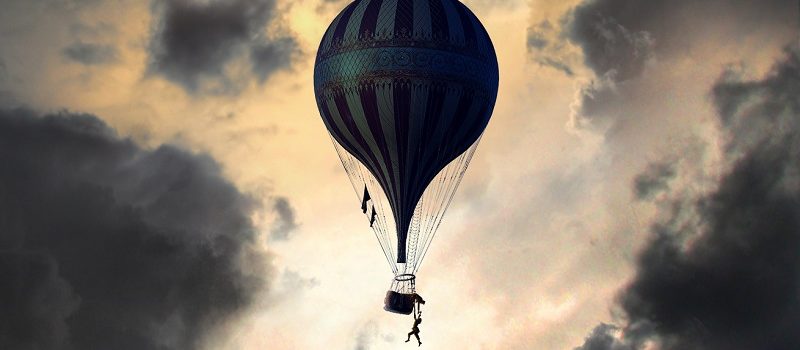When you have amazing filmmakers bringing to life stories based on significant historical events, it’s typically a recipe for greatness. The Aeronauts is a tale of the determination to expand human knowledge and ultimately, an adventurous story of emotional and physical survival.
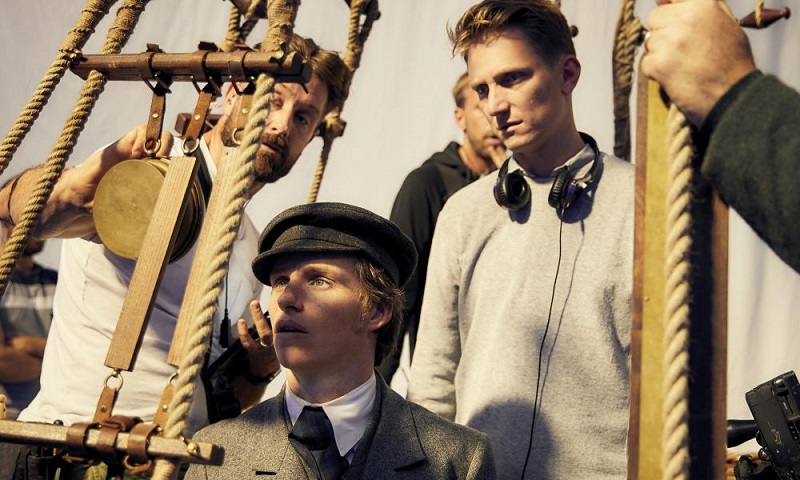
Set in a picturesque 1862, daredevil balloon pilot Amelia Wren (Felicity Jones) joins forces with pioneering meteorologist James Glaisher (Eddie Redmayne) in a mission to fly higher than any human has before.
Director/producer Tom Harper does an exquisite job bringing to life the heroic story with dazzling shots, all while educating about the history and the science behind the balloon mission that paved the way for humans to be able to predict the weather and modern-day meteorology.
From the impeccable CG to the serene cinematography, to the execution of the account and character development, The Aeronauts elevates audiences to an unprecedented level of storytelling. Aside from being visually stunning and extremely compelling, a charismatic Jones and perfectly cast Redmayne soar in this beautiful untold story of scientific and personal exploration.
The fact that famed producers Todd Lieberman and David Hoberman, who founded Mandeville Films, were involved help push this story to new heights.
At a recent press day, The Movie Mensch got to speak with the brilliant filmmakers about how they pulled off this breathtaking masterpiece and learned that they literally shot in a hot air balloon 3,000 feet in the air, among other interesting insights.
Harper said he thoroughly enjoyed working with the powerhouse producers Lieberman and Hoberman. The helmer said the experience was “really brilliant.” The Wild Rose director went on to describe the dynamic duo’s production style as “on it” and “supportive.”
“They are just so good at their jobs and that made my job so much easier,”
Harper recalled.
He went on to say that the two were extremely proactive and helpful during the
process due to their talent and experience. “In terms of giving me creative
space in which to work, but also the kind of behind the scenes support so that
issues were avoided. That’s a great skill and real pleasure to work with. But
it’s also hard work.”
Harper continued to point out that Hoberman and Lieberman, “always keep their eye on the ball, and keep hustling to make sure everything is working as it should be.”
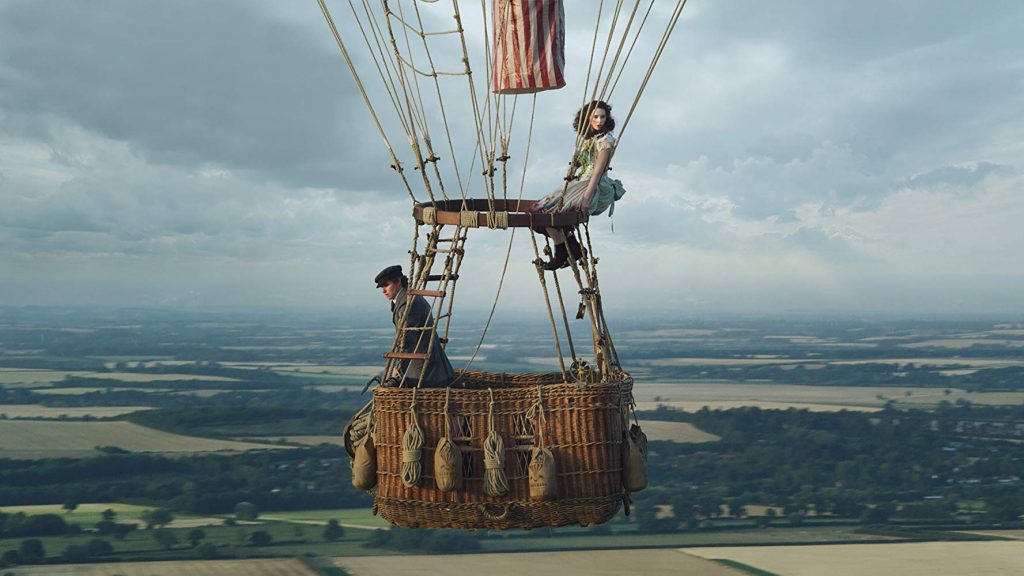
The Peaky Blinders director then went on to speak about the genesis behind The Aeronauts, recalling how George Steel, who was working as a cinematographer on War & Peace at the time, heard a blurb of Richard Holmes’ “Falling Upwards” story on the radio, and brought the idea of shooting a movie in the sky to him. Then, Harper took it and pitched it to Lieberman and Hoberman at Mandeville.
“I was looking for the right partner for the film and I had heard very good things about Todd and David, so I went and pitched them. Todd immediately liked the project and from that point on was a driving force behind making it happen,” Harper said.
He went on to highlight that it was the visual possibilities of telling a story in the sky that really fascinated everyone involved. Harper said he researched the story in detail after Steel mentioned it and that “the combination of the cinematic potential combined with how inspiring these characters were to have to go to such extreme lengths to expand our knowledge of the world” is really what motivated him to tell this story.
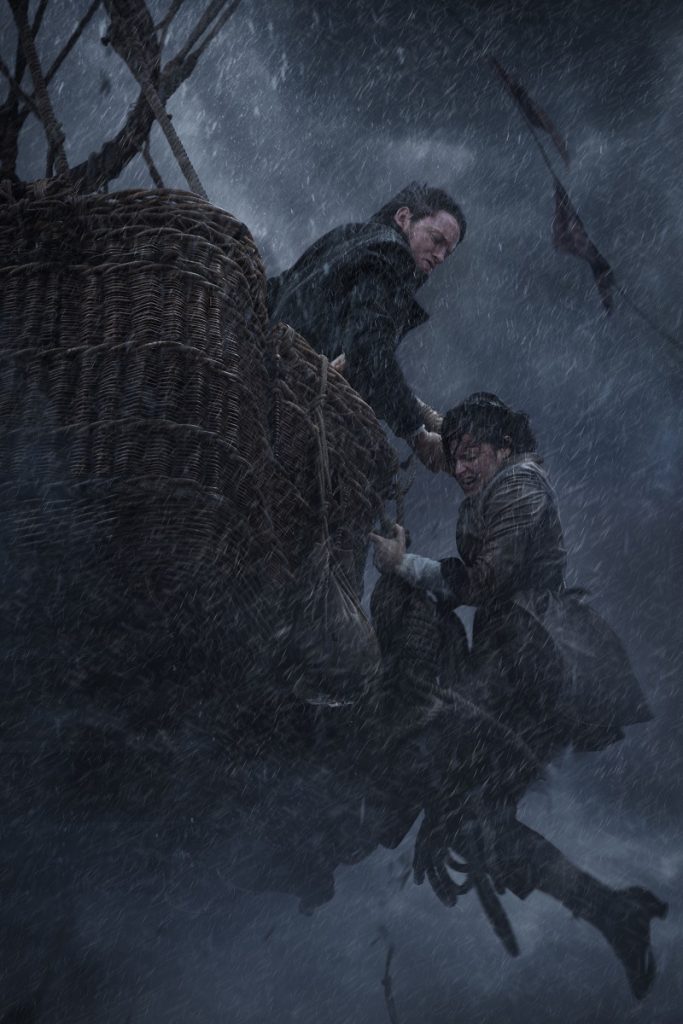
“And this epic journey in the sky,” he added. “Action, adventure, great characters. The more I scratched the surface the more it revealed, and the more I wanted to tell the story.”
Harper admitted that while filming the air did have its challenges, ultimately, it was “majestic.”
Producers David Hoberman and Todd Lieberman also commented on their past eclectic filmography from The Proposal to Disney’s Beauty And The Beast and tackling a majestic, airborne project like The Aeronauts.
Lieberman recalled the story of how Steel heard Holmes’ story on the radio, and that he and Harper should really be credited with “the way this film is shot and the way they figured out the mechanisms in which to film it.”
“Tom went out and bought the book, and within the book, there was this blurb about amazing Mammoth flight that took place in 1862,” Lieberman described. “Then we got Jack Thorne involved, who wrote the screenplay for Wonder, and he and Tom had a long history of collaboration.”
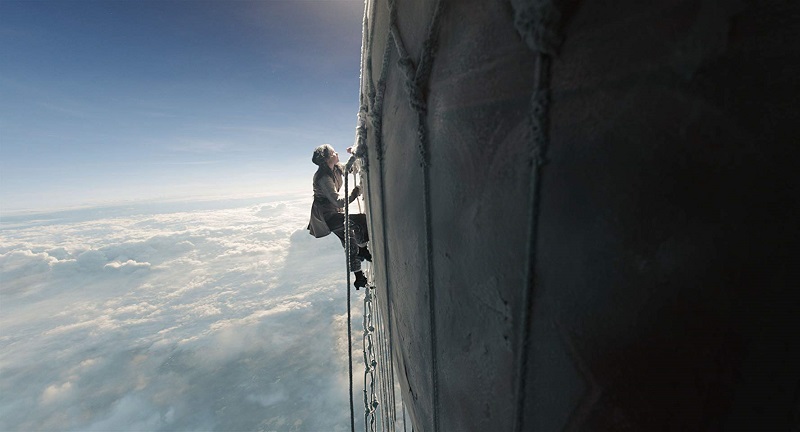
The Proposal producer went on to explain that, while he has seen much of Harper’s work, there was one project that really resonated with him. “Tom had directed many things, but what we responded to was War & Peace, which I just think is an absolutely brilliant piece of work.”
Given the tremendous success of Mandeville Films, producing films that have grossed over $1 billion in box office sales over the past few decades, we had to ask these two brilliant filmmakers what their secret sauce is for telling such appealing stories. “We have a recipe book at home,” Lieberman joked.
Hoberman said that it’s more their love for the job that drives the success of their projects than a simple checklist or recipe. “Other producers may not be as present, or let it go, but I think we genuinely love films and love being there,” The Fighter producer added. “Our job is to get the best out of everyone on the crew. I think producing is about choices, such as choosing the right writer or director.”
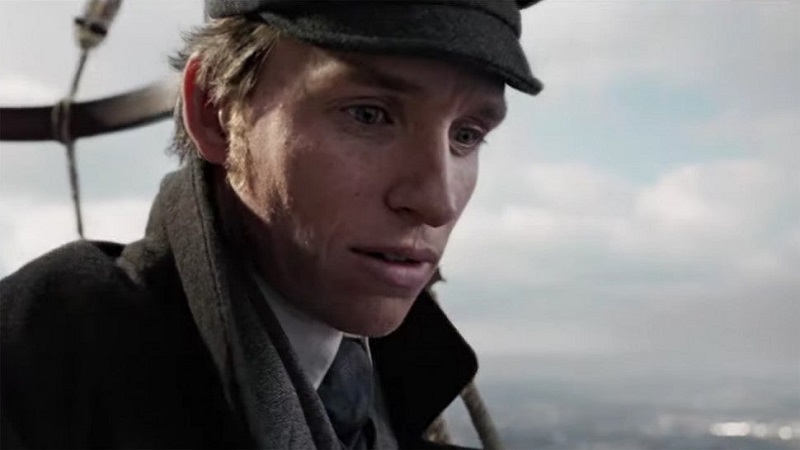
Hoberman went on to explain the importance of the crew by citing Beauty And The Beast, saying that even the line producer was such an important part of that project because it was so complicated” and they got the best they could.
“If you look at our films, we use a lot of different cinematographers; a lot of different line producers; a lot of different wardrobes. It all depends on what the film is. What the special ingredient is for that particular film,” Hoberman said.
Lieberman piggybacked on his business partner’s sentiments by throwing more accolades towards the crew, explaining, “a big part of what we are supposed to do is kind of cast the crew.”
“Make sure each one of those people is in line with what the vision is; is A-plus at their job and step back and let them do their job. We pick the right team; know what the movie is, and everyone’s in lockstep and enthused about making that movie, then our job should be kind of easy,” he summarized.
Hoberman then mentioned a piece of art in his office that reads: “Big Ego.”
The Academy Award-winning producer went on to add that they try not to ever insert their egos into the process and to keep it “about the movie.”
“A lot of people in Hollywood work from the ego,” Hoberman insisted. “And if you work from ego, you’re not servicing the movie, you’re servicing yourself and that’s a big mistake to make when making a movie.”
As far as what they look for in a story, Lieberman admitted that they “pass” on most of the stuff they’re pitched. He went on to clarify that they ask themselves as individuals and as a team: “are we the best people to tell this story?”
“We have to feel something. I always say, for us, it’s either character-driven, a great story, or a challenge or something we’ve never done before. And in the case of The Aeronauts, it’s got all of those,” Hoberman added.
Lieberman then chimed in to offer some insight into their story selection process, saying they also “try not to chase the marketplace.”
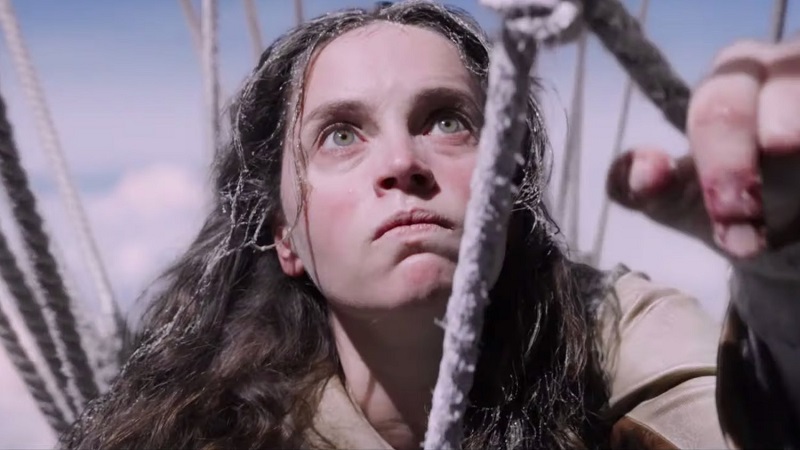
“For example, there are certain genres out there that become hot. And if that particular genre is hot and we were chasing the marketplace, we would be saying let’s try to find some stories in that genre. But if we aren’t the best people to tell the stories of that particular genre, we’re not going to even try.”
“Like, a slasher film, for example. There are just people out there that tell those stories better,” Lieberman clarified.
The two movie masters then shifted focus back to the science and educational aspects behind The Aeronauts, and how the story is so inspiring, thoughtful, educational, and well done that it could easily be mistaken for a Mouse House film.
“If the dog had stayed in the basked the entire time or there was a kid, it would have been a Disney movie,” Hoberman joked.
To dig deeper into the dynamics of the relationship between the two super producers behind Mandeville Films, The Movie Mensch asked them if they were balloonists in the 1860s, who would be the daredevil Amelia character, and who be the more focused scientist type looking at the metrics like James?
“I would be the dog,” Hoberman joked. “That’s true, you would have just jumped out,” Lieberman said laughing.
“I think I’m a little bit more fly by the seat of my pants, and you’re more conservative,” Lieberman said to his producing partner.
“Yeah, I’d be James,” Hoberman admitted. “He would be the female, as he is in our relationship,” Hoberman said facetiously.
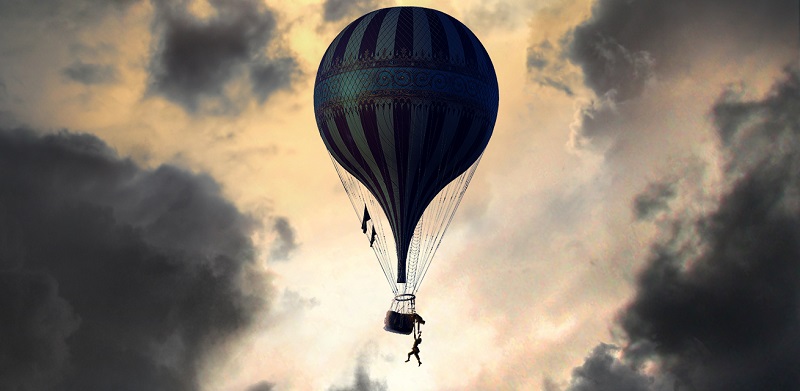
To sum up their motives for making these remarkable films with mass appeal, Lieberman said that they look for movies that make audiences feel better than when they walked in or sat down. “So, we really hope people leave this movie feeling inspired.”
“Not to sound cliché but this idea of pushing past boundaries and going up against the rules, regardless of gender, station in life, that if there is a dream, you can accomplish it,” he added.
They went on to speak about the character development and the emotional struggles with the character. “They both have this emotional hurdle to overcome. Her, obviously being her emotional loss, and his being going up against a system that doesn’t believe in what he is trying to achieve.”
“They are both running away from something and finding it in the sky,” Hoberman added.
“What’s even more incredible is that all this happened over 150 years ago. That’s like nothing. And look where we are today. Look how far the world has come after 150 years,” Hoberman emphasized.
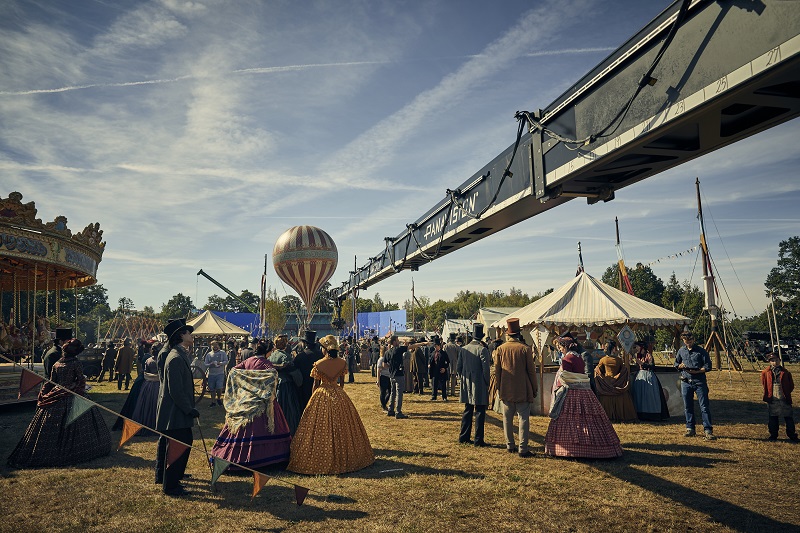
Lieberman also pointed out that their 37,000-foot-high flight all those years ago still holds the record for the highest any human has flown without supplemental oxygen.
Since the visual effects and cinematography warrant seeing this mesmerizing spectacle on the biggest screen possible, the filmmakers provided insight on how they feel about the future of streaming platforms and allowing the audience to choose either to watch from home or to screen traditionally in a theater.
“I have mixed feelings on it,” Lieberman said. He explained, “in the best possible circumstance, we would want people to see in in a movie theater, on the biggest possible screen with the best sound.”
Alas, he realizes that’s just “not a reality in today’s world.”
The award-winning producer went on to explain that one of the first jobs he had was working in a video store, where one of the perks was getting to take home two free movies every night.
“So, in 1989, I would take home classic and watch them on my little mini television at home, and I got to know all the classics that way, not on the big screen, and I enjoyed them,” Lieberman recalled.
Hoberman, on the other hand, said that as a filmmaker, he prefers his movies to be seen on film. “Particularly a movie like this, you want to see as big and as wide as you can,” he added. Lieberman concluded that if he was forced to choose between “as many possible people seeing the movie or only a certain number of people seeing it in the most optimal setting, I think I would choose the former.”
“I would want more people to see it.”
The Aeronauts flies into theaters December 6 and audiences are definitely going to want to catch it on the biggest screen possible. But if not, it will still be just as good on Amazon December 20th from the comfort of your very own home during the cozy holiday season. And don’t forget to look up!

